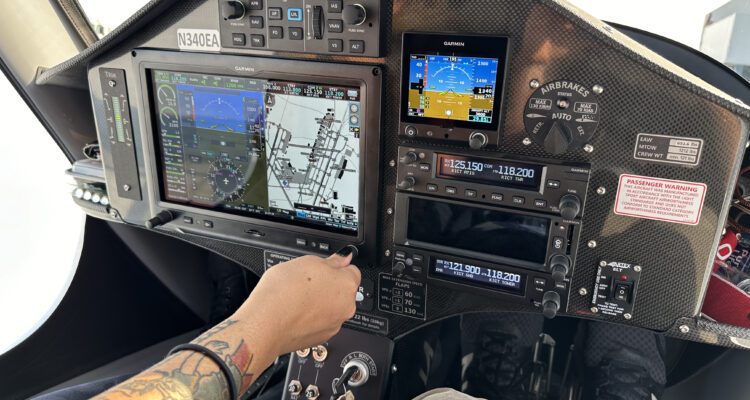(You Probably Believe at Least One of Them)
There’s a lot of noise out there about flight time-building—most of it coming from people who either haven’t done it and seem to have a suspicious amount of time on their hands to spend in the comments section of Facebook, or who want to sell you a $90,000 “career pilot package.” (If you’re looking for one of those, check this one out—it’s half that and much more transparent).
The truth? Time-building is exactly what it sounds like: flying until your logbook looks respectable enough for someone to start paying you to do it. It’s not glamorous, it’s not always fun, and it’s rarely as useless as people make it sound.
Let’s clear up a few myths that keep getting recycled in hangars and on forums by pilots who should know better.
Myth #1: Time-Building Won’t Help You Get a Job
This one’s popular among bitter CFIs and pilots who’ve already forgotten what it’s like to be stuck at 260 hours.
Reality check: every airline, charter operator, and government contractor on Earth requires flight time. Not “experience.” Not “attitude.” Flight time.
No one’s giving you a 135 checkout or ATP because you have great potential. They want hours. Time-building gives you hours. End of myth.
What will help you get a job (besides hours)? Knowing people. How do you meet people? By going outside to play. You know… in airplanes. … while time-building.
Myth #2: Time-Building Doesn’t Look Good on a Resume
Yes, your logbook tells a story. But a blank logbook tells the wrong one.
Employers know the difference between intentional, structured, skill-development-focused time-building and random joyrides. If you plan your time-building program with intention—IFR work, night cross-country, high-altitude airports, busy traffic areas, real wind—it shows discipline and judgment.
If you just did 500 hours of pattern work in the same 172, that’s on you.
So no, time-building doesn’t look bad. Lazy time-building looks bad.
Myth #3: Time-Building Won’t Make You a Better Pilot
Spending hundreds of hours in an airplane without improving takes effort. Even boredom teaches something—usually endurance and decision-making under apathy.
Spending time in an airplane always makes you better if you let it. You’ll get smoother. Sharper. You’ll stop fumbling radios and start noticing the small things that make the difference between “pilot” and “aviator.”
If you come out of 500 hours of time-building the same pilot you went in as, it’s not the program that failed.
Myth #4: Time-Building Doesn’t Give You Diverse Experience
It can, if you stop flying the same route between the same two airports.
File IFR. Go night VFR in busy airspace. Get fuel somewhere new. Send it across state lines. Help reposition aircraft for maintenance. Give yourself a mission and accomplish it.
The variety is there if you bother to look for it. The pilots who say building time is repetitive are the same ones who think a “cross-country” ends at lunch.
Myth #5: Time-Building Is Just Wasting Money
Sure, it’s not cheap. Neither is doing it the “free” way—instructing for 1,500 hours on $25K a year while paying rent, taxes and therapy bills.
When you actually crunch the numbers, accelerated time-building programs often come out cheaper than CFI purgatory, especially when you factor in the cost of living during those extra two years. Add the extra money you make by getting a seniority number quicker and the cash you spend on time-building just became a long-term investment with real ROI.
At The Flight School at Meadow Lake, rates start at $55/hour wet in a 50-hour block, with crash-pad housing from $200/week.
You’ll finish sooner, spend less in the long run and be ready for a paying job when it comes knocking. Sure would suck if you were only halfway to 1500 hours instructing when the next wave of hiring hits.
Myth #6: Time-Building Is a Waste of Time
Get it? I’m so funny. This one’s technically true, but only if you do it wrong.
All flying is what you make it. If you approach it like a logbook filler, that’s all it’ll ever be. But if you approach it like training—deliberately, intentionally, professionally—it becomes the bridge between student and commercial pilot.
Nobody remembers the hours that came easy. You remember the ones that challenged you, broke your patience and made you competent.
That’s the point. Oh, and to have good “tell me about a time” stories in your interview.
Myth #7: It’s Better to “Wait Until You Find a Flying Job”
This is how people end up not flying for a year and wondering why their skills feel rusty or why no one will hire them. You don’t wait to build time—you build time so you can stop waiting.
If you’re sitting around hoping a job falls into your lap at 250 hours, it won’t.
Find a time-building program, set a goal, grind it out and get on with your career.
Myth #8: All Time-Building Programs Are the Same
Not remotely. Some schools charge more than charter operators and give you nothing but excuses about maintenance delays. Others, like The Flight School at Meadow Lake, keep it simple: good airplanes, fair rates, flexible scheduling and staff that actually know what it means to fly all night.
The difference between a good and bad flight time-building experience usually comes down to one thing—who’s running it.
If the place looks like a front for a pyramid scheme, it probably is. (“Pyramid scheme” can be found in the dictionary next to “We’ll give you a job as a CFI when you graduate our training program!”)
Bitter Redditers Don’t Build Hours — You Do
Time-building gets a bad reputation because pilots treat it like a holding pattern instead of what it really is: your last big chance to polish every skill you’ve got before someone starts paying you to use them.
You don’t have to love it (but why wouldn’t you? You’re in an airplane!) You just have to do it right.
Fly often. Fly smart. Don’t be the pilot who complains about time-builders while still at 480 hours wondering why recruiters won’t call.
The Flight School at Meadow Lake
Affordable. Honest. Boring (in a good way).
$55/hour wet in 50-hour blocks.
Housing from $200/week.
Time-building programs designed to get you to 1,500 hours with your sanity [mostly] intact.





